
eBook - ePub
Elemental Magic, Volume I
The Art of Special Effects Animation
Joseph Gilland
This is a test
Buch teilen
- 328 Seiten
- English
- ePUB (handyfreundlich)
- Über iOS und Android verfügbar
eBook - ePub
Elemental Magic, Volume I
The Art of Special Effects Animation
Joseph Gilland
Angaben zum Buch
Buchvorschau
Inhaltsverzeichnis
Quellenangaben
Über dieses Buch
Create amazing animated effects such as fiery blazes, rippling water, and magical transformations. Animation guru Joseph Gilland breaks down the world of special effects animation with clear step-by-step diagrams and explanations on how to create the amazing and compelling images you see on the big screen. 'Elemental Magic' is jam-packed with rich, original illustrations from the author himself which help explain and illuminate the technique, philosophy, and approach behind classical hand drawn animated effects and how to apply these skills to your digital projects.
Häufig gestellte Fragen
Wie kann ich mein Abo kündigen?
Gehe einfach zum Kontobereich in den Einstellungen und klicke auf „Abo kündigen“ – ganz einfach. Nachdem du gekündigt hast, bleibt deine Mitgliedschaft für den verbleibenden Abozeitraum, den du bereits bezahlt hast, aktiv. Mehr Informationen hier.
(Wie) Kann ich Bücher herunterladen?
Derzeit stehen all unsere auf Mobilgeräte reagierenden ePub-Bücher zum Download über die App zur Verfügung. Die meisten unserer PDFs stehen ebenfalls zum Download bereit; wir arbeiten daran, auch die übrigen PDFs zum Download anzubieten, bei denen dies aktuell noch nicht möglich ist. Weitere Informationen hier.
Welcher Unterschied besteht bei den Preisen zwischen den Aboplänen?
Mit beiden Aboplänen erhältst du vollen Zugang zur Bibliothek und allen Funktionen von Perlego. Die einzigen Unterschiede bestehen im Preis und dem Abozeitraum: Mit dem Jahresabo sparst du auf 12 Monate gerechnet im Vergleich zum Monatsabo rund 30 %.
Was ist Perlego?
Wir sind ein Online-Abodienst für Lehrbücher, bei dem du für weniger als den Preis eines einzelnen Buches pro Monat Zugang zu einer ganzen Online-Bibliothek erhältst. Mit über 1 Million Büchern zu über 1.000 verschiedenen Themen haben wir bestimmt alles, was du brauchst! Weitere Informationen hier.
Unterstützt Perlego Text-zu-Sprache?
Achte auf das Symbol zum Vorlesen in deinem nächsten Buch, um zu sehen, ob du es dir auch anhören kannst. Bei diesem Tool wird dir Text laut vorgelesen, wobei der Text beim Vorlesen auch grafisch hervorgehoben wird. Du kannst das Vorlesen jederzeit anhalten, beschleunigen und verlangsamen. Weitere Informationen hier.
Ist Elemental Magic, Volume I als Online-PDF/ePub verfügbar?
Ja, du hast Zugang zu Elemental Magic, Volume I von Joseph Gilland im PDF- und/oder ePub-Format sowie zu anderen beliebten Büchern aus Computer Science & Computer Science General. Aus unserem Katalog stehen dir über 1 Million Bücher zur Verfügung.
Information
Chapter 1
A Brief History of Classical
Animated Special Effects
Although this is not intended to be a history book at all, I thought it would make sense to run through a very brief history of how hand-drawn special effects animation evolved to become a well-developed art form all its own. It has been, through the decades ill defined at best, but nevertheless, special effects animation can stand on its own as an important, exciting, and vital facet of the art of animation. I'd like to take it from cave paintings to computers, and see where we end up!
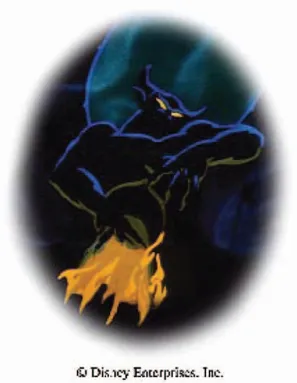
While the history of animation as a whole took place not only in North America, but in Europe, Asia and pretty much all over the world, I am approaching the art of animating special effects for the most part from the Western or North American standpoint. Much as a book on the history of the fine arts might focus on a particular art period or place of origin, I cannot help but turn to the American Disney classics such as Pinocchio and Fantasia when discussing the art of hand-drawn effects animation which, during the 1930s and '40s at the Disney animation studios, was brought to a level of mastery that has not been matched since.
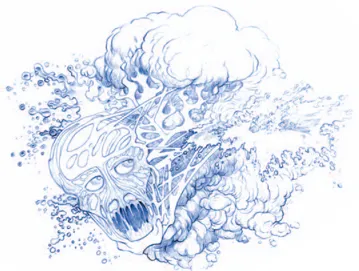
For starters, let's go way, way back, to the dawn of man's creative impulses, and the earliest recorded sculptures and cave paintings. What we have decided to call “art” has often reflected man's fascination with the elements that shape the world around him. Throughout the early centuries of recorded history, we see the sun, the moon, mysterious constellations of stars in the night sky, volcanoes, floods and fires represented in man's art. Elements and occurrences that must have frightened, confused and mystified early man. Events that we labeled “Acts of God” that awoke within us not only fear and misunderstanding, but also a profound curiosity about how the world around us might work. Artists throughout the ages have also continually depicted spiritual and magical energies. Angels bathed in light, wizards, faeries and cupids casting mystical spells. And as science, geology, astronomy, mathematics and physics evolved, there were always men and women who probed a little further into the unknown. The “mad scientists”, the inventors, the artists, the Leonardo Da Vinci's of the world. Often misunderstood by their peers, but nonetheless, the real shakers and movers of mankind's evolutionary path. We have within these two groups, a strange mixture of practical, scientific minds, and fanciful, creative minds. This is the legacy of the creative men and women who have evolved into the modern day special effects animation artists. Scientist/artist/magicians playing with a new set of alchemical tools, playing with light and shadow, and playing God with our imaginations!
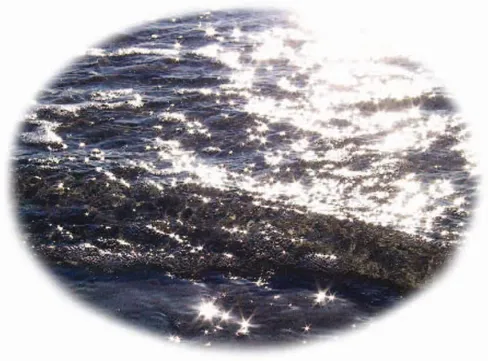
Shortly after the turn of the century, an eclectic Frenchman named George Melies began experimenting with special effects techniques in his ground-breaking live-action films, using innovative matte paintings, double exposures, split screens, miniature models, and stop-motion animation to conjure up magical looking scenarios, the likes of which had never been seen before. Although he did not work on animated films, Melies' did create many special effects that could be considered to be animated, and his contribution to the future of special effects animation cannot be underestimated. With his genius for inventiveness and experimentation, Melies innovated on the fly as he made his films, and his work paved the way for generations of animation and special effects artists to follow.
When the history of the animated film began, back in the very early 1900s, special effects such as shadows, water, fire, smoke and motion effects were not yet considered as anything but an occasional addition to the main character animation of the day.
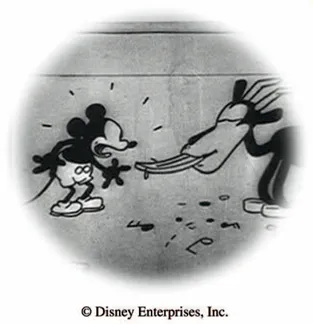
Some of the most influential and beautiful hand-drawn special effects of the day were seen in Winsor McCay's 1905 classic “Little Nemo in Slumberland” comic strip, and his 1912 comic strip “In the Land of the Wonderful Dream” Winsor McCay was masterful with his renditions of clouds, magic, water splashes, fire and smoke. His drawings were highly stylized yet somehow incredibly realistic and true to the real underlying physics of the effects being drawn, especially considering that in that day and age there was no way of filming these types of phenomena and examining them frame-by-frame as we can today.
In the earliest animated cartoons, the special effects were generally quite rudimentary. There were often exclamation-like designs emanating from character's heads to indicate when they were surprised or afraid before sound was added to cartoons, or maybe a character spitting into a metal spittoon with a loud dinging sound, in time with the music, in the earliest sound cartoons. A character might pick up an object, like Mickey in “Steamboat Willie”, to bang out a tune with spoon on pots and pans and other various props scattered around his steamboat.
When in “Gertie the Dinosaur”, Winsor McCay's ground-breaking animation classic, a sea serpent spat water, there was some simply fantastic water animation, but not a great deal of thought or research really went into it, as the focus was entirely on the magic of bringing a character to life for the first time.
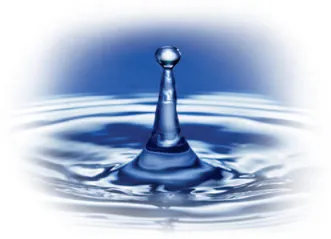
In 1930, Walt Disney Studio's special effects department was made up of only two artists. Ugo D'Orsi, who would go on to animate the incredible water effects in Fantasia's “The Sorcerer's Apprentice” and Cy Young, who animated the dancing flowers in Fantasia's “Nutcracker Suite”. But that was soon to change drastically. By 1935 and throughout what is often referred to as the “Golden Years” of animation (1935–1941) the effects department at Walt Disney Animation continued to grow and develop into a very specialized department, and by the late '30's with the production of Fantasia, the effects department had blossomed into a diverse collection of well over 100 highly specialized artists. Led by the genius of artists like Carleton (Jack) Boyd, Josh Meador, and Dan McManus, this department elevated special effects animation to the level of a truly fine art.

“The men and women who solved these problems were skilled craftspeople of diverse background who had been thrown together in the catchall department, special effects.”
—Frank Thomas and Ollie Johnson from “The Illusion of Life”
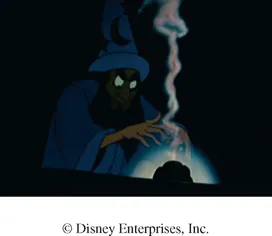
Through experimentation and observation and a great deal of very hard work, what was once a secondary aspect of animation became more and more vital to the art of animation. These were a new breed of animators, artists with a pronounced interest in nature and the elements, often with a deeply scientific approach, bringing artistic flair and originality to their work. Special effects became a passionate calling for these individuals (as it has for me) who went to incredible lengths to understand the physics behind fire and smoke, and water in all its forms, light and shadow and its interplay with backgrounds and characters, even the simplest falling leaves or flower petals would be studied intensely to achieve a sense of magical realism. The mastery of the water animation in Pinocchio's “Monstro” the whale sequence, and the birthing of a planet, with volcanoes, earthquakes, and typhoons in Fantasia's “The Rite of Spring”, were inspired achievements of animation which have yet to be equaled to this day. In Fantasia, virtually every type of effects animation imaginable was explored, researched, and to a great degree, mastered. In the film Fantasia alone, the effects animation department handled a staggering array of phenomena.
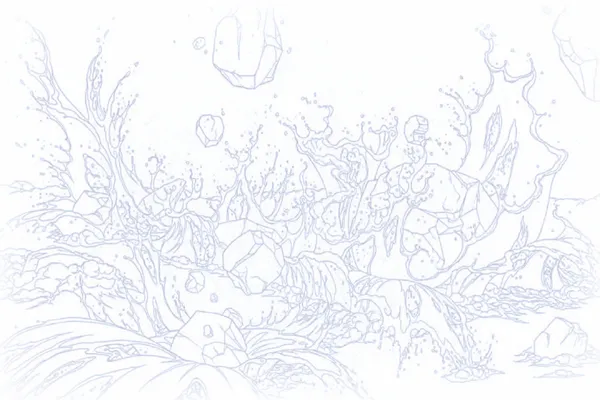
Earthquakes, volcanoes, lightning, rain, bubbling and spewing lava, bubbling mud, magical fairy dust, dandelion seed pods, glistening water drops on a spider web, ocean waves, steam, snowflakes, leaves and flower petals, magic spells, meteors and swirling galaxies, smoke, spirits, frost, clouds, and countless forms of water splashes, waves, and ripples. Even this is only a short list! Special effects, although still a very loosely defined term covering an incredibly broad range of animation styles, techniques and technologies, had truly come into its own, and other studios soon followed suit, turning to artists with a particular penchant for understanding and animating the natural elements necessary to make their cartoons truly come to life. While it is all good and well to romanticize this amazing discipline of bringing the elements to life in animated drawings, there is another side to special effects animation that is not romantic or exciting at all. The sheer volume of work and endless pencil miles required to animate something like a heaving ocean surface or an enormous avalanche rushing down the side of a mountain, is tortuous at the best of times.
Of course animating characters and cleaning them up and adding in-betweens is no walk in the park either, but anyone who has done both can tell you that some special effects scenes will send you to an early grave if you are not prepared for the incredible levels of graphic detail that can be involved. So anyone interested in special effects animation should keep this in mind.
The men and women who pioneered this work were not only ingenious, inventive and brilliant, they were also absolutely crazy! And there were those in the business of making animated films who took full advantage of this newly born department full of inventors and creative outcasts. Thus was born the new hybrid effects animation department, the department that does all the stuff that nobody else in the studio wants to
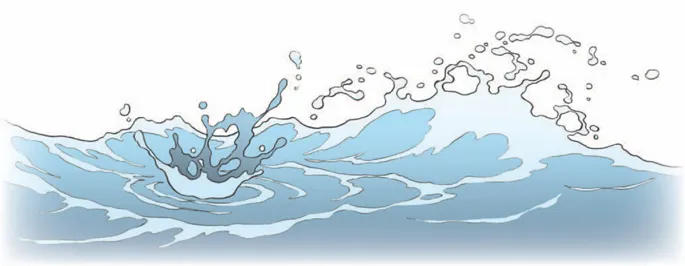
do. So if it were discovered that no one in the studio had ever drawn or animated an automobile, it would get sent to the special effects department. If a character had to handle a difficult prop of some sort that the character animators didn't want to deal with, it got sent to the special effects department. Of course making animated films is always a highly collaborative venture, there is generally a lot of back and forth and sharing of difficult tasks, and it would be an oversimplification to say that all the difficult, gnarly animation jobs got sent to the effects department. However, I can say without a moment's hesitation that the effects departments in most animation studios I ever worked in, evolved into being catchall departments for all the oddball jobs that come up when you are making an animated film.
Today, the modern art of animation filmmaking relies more and more heavily on computers. Animation artists have adapted quickly, realizing that computer technology removes a great deal of the difficulty and drudgery involved in producing animated films. Recently, the most successful animated films have been almost entirely computer generated (with the notable exception of the Japanese animé market) and the future of hand-drawn animation in feature films has been brought into question again and again. But the men and women in the studios that are
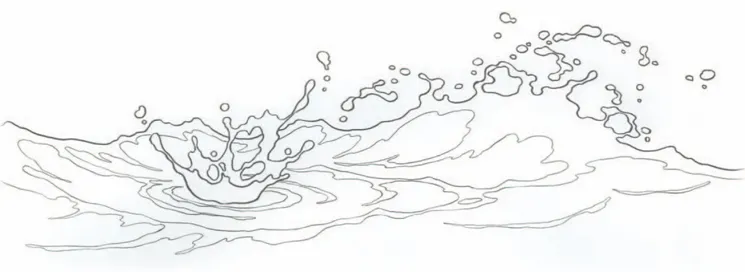
making the most successful films out there today know better. The succe...